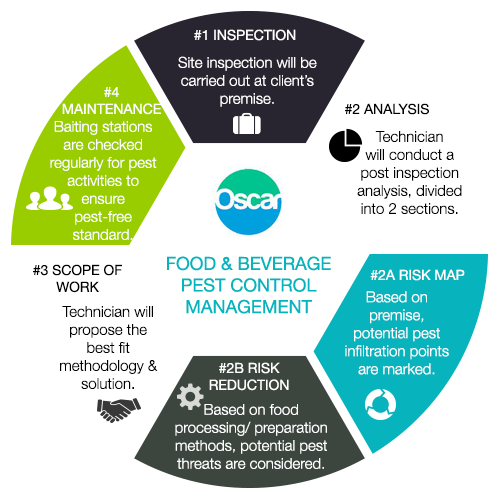By Getting Understanding Into The Complexities Of Rodent Nesting Behaviors, You Can Create An Extensive Method To Rodent Control That Outwits These Insects
By Getting Understanding Into The Complexities Of Rodent Nesting Behaviors, You Can Create An Extensive Method To Rodent Control That Outwits These Insects
Blog Article
Short Article By-McDonough Waugh
When it comes to rodent control, recognizing usual rodent behavior is vital to effectively handling problems. Did you understand that rodents have some interesting nesting habits that might amaze you? By exploring their detailed habits, you can acquire important insights right into exactly how to tackle rodent problems in a much more critical and effective manner. So, let's decipher the secrets behind these animals' actions and learn how to outmaneuver them in your rodent control efforts.
Rat Nesting Habits
When observing rats in their natural environment, you'll discover that they actively look for products to build their nests. Rats, such as mice and rats, are resourceful creatures that use a variety of things like twigs, leaves, paper, and textile to develop their homes. They're meticulous in their nest-building procedure, commonly lining their nests with softer materials like fur or plumes to create a cozy atmosphere.
Rats like to build their nests in concealed and safe places to protect themselves and their young from predators. Common nesting places include wall dental caries, attic rooms, cellars, and also within insulation materials. By building their nests in these secluded areas, rats can safely elevate their children far from prospective dangers.
It is important to comprehend the nesting routines of rodents when executing control actions. By disrupting their nests or eliminating materials, you can inhibit rodents from developing a presence in your house or property. Appropriate cleanliness and sealing off access factors are also critical action in protecting against rodent problems.
Rodent Feeding Patterns
After observing rats' nesting habits, it becomes noticeable that their feeding patterns play an important role in their day-to-days live and actions. Rats, consisting of mice and rats, are opportunistic feeders, implying they'll eat whatever food source is easily offered. They're mostly nocturnal creatures, liking to forage for food during the cover of night to prevent killers.
Rodents have a varied diet regimen, ranging from grains, seeds, fruits, and vegetables to insects, nuts, and even little pets. https://docs.google.com/spreadsheets/d/1gu4ByGtghIofBNRz8YP_5WGzjsVBEXShijWYIWhrXN0/edit?usp=drive_link in their food selections allows them to prosper in numerous settings, including city areas where human food sources are abundant.
see this page feeding patterns aren't just driven by appetite but likewise by the requirement to stock food for times of deficiency. This habits is specifically noticeable in preparation for cold weather or when nesting. Rats are recognized to hoard food in their nests or burrows, making sure a consistent food supply. Recognizing their feeding patterns is essential in executing efficient rodent control actions to interrupt their food resources and avoid infestations.
Rat Activity and Travel
Rodents browse their environments with dexterity and stealth, using their keen detects to relocate promptly through their settings. These creatures are proficient mountain climbers, able to range walls and vertical surfaces with ease. They can additionally squeeze via remarkably small openings, making it essential to seal any type of potential access points in your house.
When it comes to taking a trip, rats tend to adhere to familiar paths, producing routes along wall surfaces or skirting the edges of spaces. They're creatures of habit, frequently adhering to these established paths as they forage for food or explore their surroundings.
Rats are known for their nighttime behaviors, so you may hear them scurrying around in the evening as they look for food and water. Their motions are quick and unpredictable, allowing them to dart in and out of view in the blink of an eye.
Recognizing just how rodents relocate and take a trip can assist you identify potential problem areas in your home and take aggressive actions to avoid these pests from gaining a footing.
Conclusion
As you function to control rats in your house, keep in mind that recognizing their actions is key. By acknowledging their nesting practices, feeding patterns, and motion, you can successfully avoid problems.
Together, by taking proactive steps to eliminate food resources and seal off entry factors, you can disrupt their acquainted paths and compel them to seek brand-new locations, inevitably reducing the chance of rodent visibility in your living spaces.
